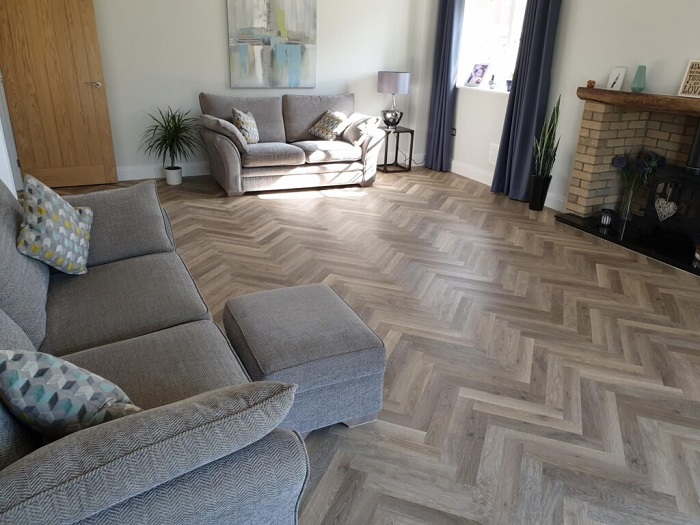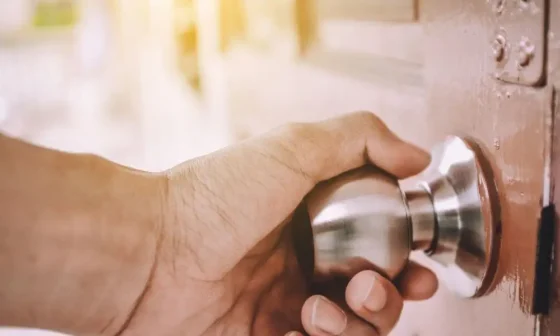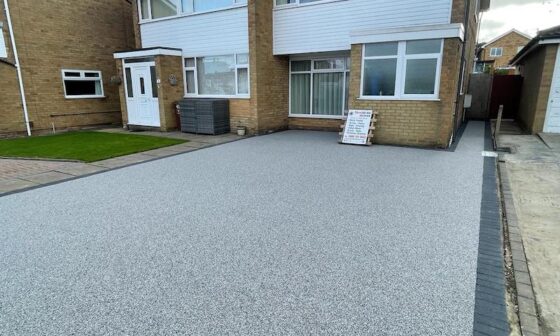
Removing Karndean flooring can seem like a daunting task due to its durable and adhesive-backed nature. However, with the right tools and detailed instructions, the process can be made straightforward and efficient.
This guide will provide you with step-by-step instructions on how to remove Karndean flooring, ensuring minimal damage to the subfloor and surroundings.
Materials and Tools Needed
Before starting the removal process, it is crucial to gather all necessary materials and tools:
- Utility knife: Essential for cutting the flooring into manageable sections.
- Heat gun or hair dryer: Used to soften the adhesive.
- Scraper: For prying up the flooring.
- Pliers: Useful for pulling up the flooring once it’s loosened.
- Adhesive remover: To clean up any remaining glue residue.
- Protective gear: Gloves, knee pads, and safety glasses to ensure personal safety.
Preparation
1. Clear the Area: Remove all furniture and items from the room to ensure you have a clear workspace. This will also prevent any damage to your belongings.
2. Clean the Floor: Sweep or vacuum the floor to remove any dirt or debris that could interfere with the removal process.
3. Identify the Type of Adhesive Used: Karndean flooring can be installed using different types of adhesives. Knowing whether a permanent or temporary adhesive was used can help in selecting the right method for removal.
Step-by-Step Removal Process
1. Cutting the Flooring into Sections
Using a utility knife, score the Karndean flooring into small, manageable sections. This will make it easier to handle and remove. Be careful not to cut too deeply to avoid damaging the subfloor beneath.
2. Heating the Adhesive
Using a heat gun or hair dryer, apply heat to a section of the flooring. This will soften the adhesive, making it easier to pry up the flooring. Hold the heat source a few inches above the surface and move it back and forth until the adhesive becomes pliable.
3. Lifting the Flooring
Once the adhesive is heated and softened, use a scraper to lift the edge of the flooring section. Insert the scraper under the edge and gently pry it up. If the flooring resists, apply more heat and continue prying.
4. Pulling Up the Flooring
After prying up an edge, use pliers to pull the flooring away from the subfloor. Work slowly and steadily to avoid tearing the flooring, which can make removal more difficult. Continue heating and pulling until the entire section is removed.
5. Removing Adhesive Residue
After the flooring is removed, there will likely be adhesive residue left on the subfloor. Apply adhesive remover according to the manufacturer’s instructions. Allow it to sit for the recommended time to soften the glue. Use the scraper to remove the softened adhesive. Repeat this process until all residue is cleared.
6. Cleaning the Subfloor
Once all the adhesive is removed, clean the subfloor thoroughly. Use a damp cloth to wipe away any remaining adhesive remover or residue. Ensure the subfloor is completely dry before proceeding with any new flooring installation.
Additional tips for successfully removing Karndean flooring
Work in Small Sections
Tackling the flooring in small sections makes the process more manageable and ensures that the adhesive stays warm and pliable. This approach not only helps in maintaining control over the removal process but also reduces the strain on your tools and body.
Maintain Proper Ventilation
If using chemical adhesive removers, ensure the room is well-ventilated to avoid inhaling fumes. Open windows and doors, and use fans to circulate air. Proper ventilation is crucial for your safety, especially when working in enclosed spaces.
Test Adhesive Removers on a Small Area First
Before applying adhesive remover to the entire floor, test it on a small, inconspicuous area. This will help you ensure that it effectively removes the adhesive without damaging the subfloor. Different removers work differently depending on the adhesive type and subfloor material.
Dispose of Old Flooring Properly
After removing the Karndean flooring, dispose of it properly. Check local regulations for the disposal of vinyl flooring and adhesive. Some areas may have specific guidelines or recycling programs for flooring materials.
Inspect and Repair the Subfloor
Once the old flooring is removed, inspect the subfloor for any damage or irregularities. Look for signs of moisture, mould, or structural damage. Addressing these issues before installing new flooring will ensure a stable and durable surface.
How long does it take to remove Karndean flooring?
The time it takes to remove Karndean flooring can vary significantly depending on several factors, including the size of the area, the type of adhesive subfloor. On average, a small room of about 10 to 15 square metres might take a few hours to a full day to complete, assuming the adhesive isn’t excessively stubborn.
Larger areas or rooms with particularly strong adhesive might take longer, potentially spanning over a couple of days. Additionally, if there are multiple layers of flooring to remove or if the flooring is damaged and requires careful handling, this can further extend the time needed. Proper preparation and having the right tools on hand can help streamline the process and minimise delays.



